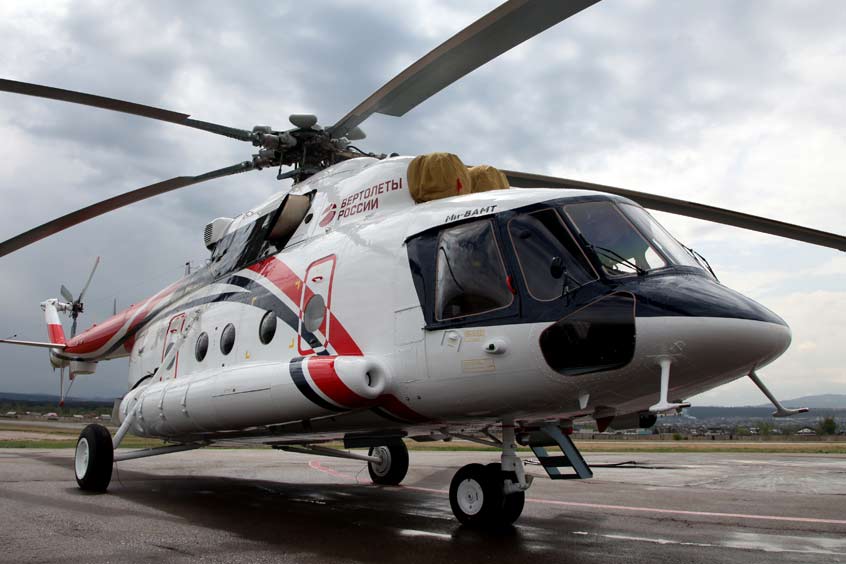ACE 2026 - The home of global charter.
 The bimonthly news publication for aviation professionals.
The bimonthly news publication for aviation professionals.

Russian Helicopters has commenced serial production of Mi-8AMT Arctic helicopters for civilian customers. Its subsidiary, Ulan-Ude Aviation Plant, has completed the first rotorcraft, and it is now ready to begin operations.
The Mi-8AMT in Arctic configuration completed its flight test programme and passed the procedure of acceptance by an independent commission of Russia's Federal Air Transport Agency (Rosaviatsiya). The rotorcraft's main features include a system for heating transmission parts, designed by JSC National Helicopter Centre Мil and Kamov. The system provides for quick start of engines in extremely low temperatures, even if the helicopter has been out of the hangar for a long time.
The heating system is complemented by thermal protection of the cargo cabin and insulation shutters in the sliding and cockpit doors. Covers protect the helicopter from low temperatures, high humidity and strong wind. All systems use teflon hoses, resistant to freezing temperatures, instead of rubber ones.
“The Mi-8AMT will be sought after by many Russian companies and government agencies implementing projects and tasks in the Arctic,” states Russian Helicopters director general Andrey Boginsky. “The first rotorcraft is ready to start operation, and negotiations with several potential Russian customers are under way. We are making every effort to provide operators with reliable and modern helicopters, which are indispensable when many important tasks related to work in the region have to be carried out."
The helicopter is equipped with two additional fuel tanks, which allow it to fly long distances. This is important for northern districts of Russia that have low population density. The Arctic version of Mi-8AMT can fly up to 1,400 km. An emergency flotation system can also be installed on the helicopter, allowing it fly over the vast water area of the Arctic.
“This helicopter is necessary for air medical services, maintenance of fuel and energy facilities, and for meeting the needs of polar expeditions. It may also help organise transportation in northern regions,” emphasises MD of Ulan-Ude Aviation Plant Leonid Belykh.
When the helicopter was designed, great attention was given to ensuring that it is capable of flying over the Arctic terrain with few features, in the conditions of polar night, harsh weather and when satellite and radio signals are lost. For that purpose the rotorcraft is equipped with a special navigation complex.
The complex includes several navigation systems for locating the helicopter, a radar with horizontal and vertical sweep of information on the weather, a digital autopilot and radio stations with a wide range of frequencies. The helicopter is capable of automated hovering, flying a planned hovering route and landing. The navigation system reduces the load on the crew and ensures greater safety.